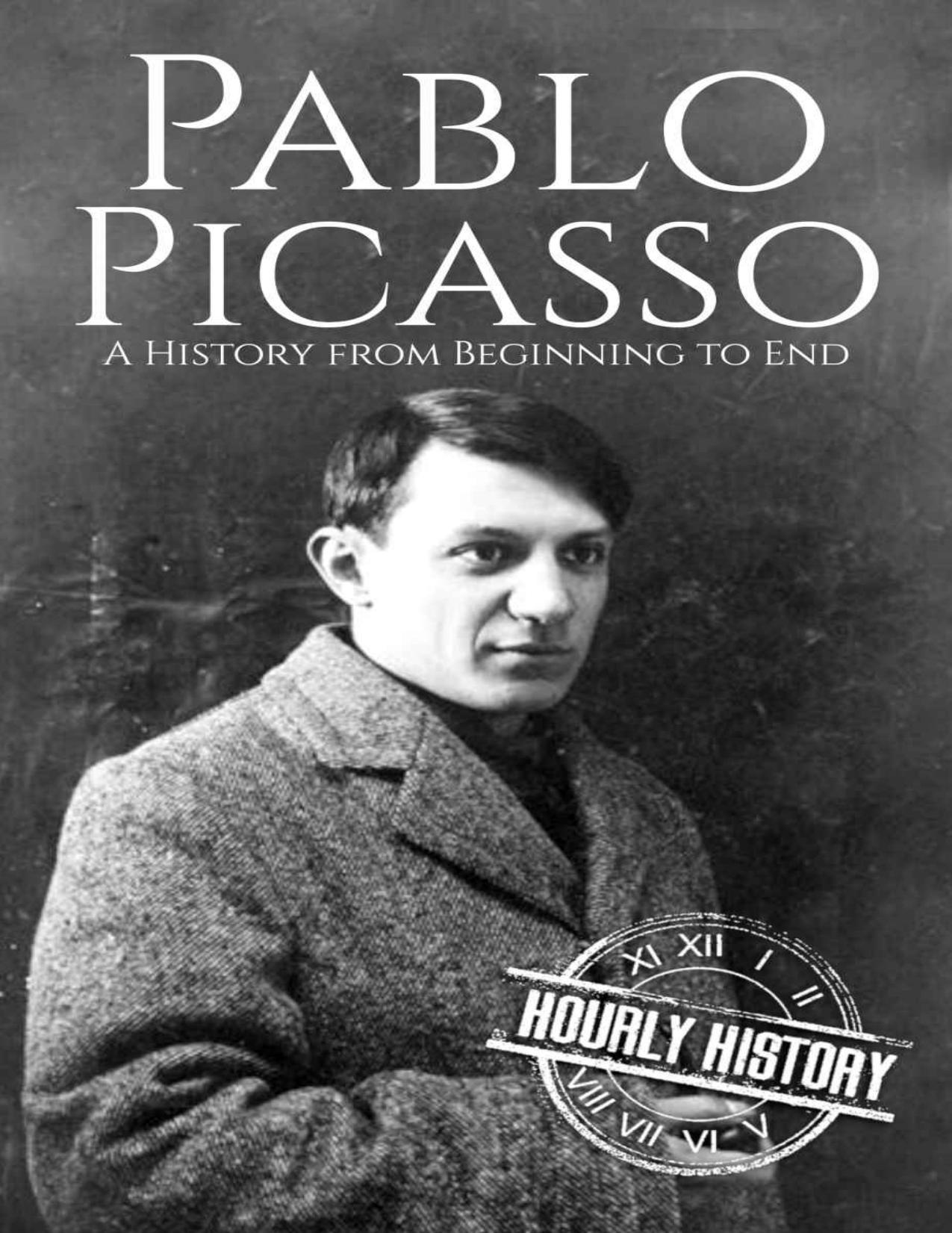Pablo Picasso: A Life from Beginning to End (Biographies of Painters Book 5) by Hourly History

Author:Hourly History [History, Hourly]
Language: eng
Format: azw3, pdf
Published: 2020-04-11T16:00:00+00:00
Chapter Six
Picasso during World War I
âArt is an instrument in the war against the enemy.â
âPablo Picasso
August of 1914 saw the outbreak of World War I. A legal citizen of Spain, Picasso was not required to serve in the French army, but many of his artist friends either joined up or left Paris. When seen on the streets in civilian clothes looking fit and healthy, he was frequently mocked by passers-by as a coward. Again, his emotions leaned toward depression, and things would soon become even worse.
Marcelle had developed an illness (most likely tuberculosis or cancer) and had to be hospitalized. Picasso visited her every day until her death in December of 1915. If the war alone wasnât bad enough, he was left heartbroken by Marcelleâs premature death. During this challenging time, he met Gertrude Stein occasionally in a sidewalk café, where he was introduced to composer Erik Satie and poet Jean Cocteau. It was Cocteau who drew Picasso into the shining world of Diaghilevâs Ballets Russes.
In 1917, the three of themâCocteau, Satie, and Picassoâworked on the performance of the Russian ballet Parade. Cocteau provided the concept, Satie composed the music, and Picasso designed the sets and wardrobe. When it premiered, it was one of the most remarkable opening nights in the art world. The plot itself wasnât unusualâthe events take place in a Paris dancehall, although such a setting would have previously been considered too common for a ballet. The characters were circus artists, a portion of the population Picasso had spent years paintings in colorful abstraction.
Although the opera was generally praised by critics, it was booed by a portion of the audience during the opening night. A riot almost broke out as this outraged faction of theatergoers became unruly. It caused such as scandal that years later, composer Stravinsky stated with pride that even he had been unable to produce such scandalous material. Perhaps the only joy in this disaster was that the ballet introduced Picasso to one of the showâs ballerinas, Olga Khokhlova. The two were promptly married in 1918.
Picasso, of course, continued with his painting, and once again, he was experimenting with different styles. Cubism was becoming fashionable among elite collectors, but with the war came denouncements of Cubism as âGerman art.â Critics insisted that the fragmented pieces in the paintings were nothing but a reflection of Germanyâs attempt to fragment Europe. As the Germans marched into Paris, more and more people viewed Cubism with suspicion. Newspapers were filled with cartoons of Cubist Germans. It was quickly decided that this particular genre was not a part of the French culture. It was also pointed out that Picasso was a Spaniard and not one of them.
It didnât help that Picassoâs devoted art dealer, Daniel-Henry Kahnweiler, was a German Jew. This fact alone forced him to flee to Switzerland. The French state eventually confiscated all Kahnweilerâs belongings, which included artworks by Picasso. His work was sold at auction, with the profits going to the government. Picasso never saw a penny and experienced serious financial difficulties.
Download
Pablo Picasso: A Life from Beginning to End (Biographies of Painters Book 5) by Hourly History.pdf
This site does not store any files on its server. We only index and link to content provided by other sites. Please contact the content providers to delete copyright contents if any and email us, we'll remove relevant links or contents immediately.
Melania and Me by Stephanie Winston Wolkoff(1031)
The Class of 83 by Hussain Zaidi(965)
Live in Love by Lauren Akins & Mark Dagostino(949)
Dancing in the Mosque by Homeira Qaderi(921)
Orlando by Virginia Woolf; Mark Hussey(887)
A History of My Brief Body by Billy-Ray Belcourt(880)
Just as I Am by Cicely Tyson(724)
Stranger Care by Sarah Sentilles(722)
The Schoolgirl Strangler by Katherine Kovacic(720)
Virginia Woolf by Between The Acts(711)
Robespierre: A Revolutionary Life by Peter McPhee(710)
Unforgetting by Roberto Lovato(702)
Ariel (english and spanish Text) by Sylvia Plath(695)
1914 by Luciano Canfora(691)
Broken Horses by Brandi Carlile(690)
Paris Without Her: A Memoir by Gregory Curtis(687)
Harriet Tubman: The Biography by University Press(683)
Berlin Diary: The Journal of a Foreign Correspondent 1934-41 by William L. Shirer & Gordon A. Craig(680)
One Life by Megan Rapinoe & Emma Brockes(678)
